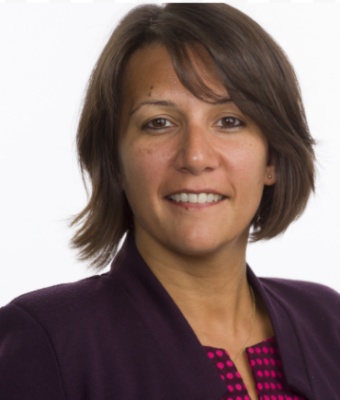FPM Conversation Blog – Enabling a Greater Diversity of People in Clinical Trials
Posted on: Friday 30 April 2021
Summary of Points To Consider arising during the Conversation
Prepared by Craig Hartforda, Camila Pullizab, FPM, with content input from all Speaker-Panellists
On Thursday 18 March 2021 the Faculty of Pharmaceutical Medicine (FPM) hosted an online event in their series of FPM Conversations, titled Enabling a Greater Diversity of People in Clinical Trials. The event was moderated by Dr Craig Hartforda. The main session’s Speaker-panellists included Alex Phippsc, Sheuli Porkessd, and Antonio Pagliucae, with pre-session special guests from FPM, Zoya Panahloof and Marc Watsong, also participating.
Genetic PK-PD Heterogeneity – a driver for Clinical Trial Diversity
- Heterogeneity of PK-PD in genetic markers can account for variability in the efficacy of a drug as well as variability in the propensity for drug interactions and in administering the correct dosage. Covariance analysis for gender, ethnicity, race, and others, where there are representatives for each group should take place to evaluate the potential difference in the effects of a drug administered.
- Some examples that amplify the need for diversity in clinical trials include the use of efavirenz and rosuvastatin. Efavirenz, a TB and HIV medication, has shown different effects in different groups. The drug is metabolized by cytochrome 2b6 which clears drug out of the body. The cytochrome has genetic polymorphisms that show a racial distribution. If they are not accounted for, the higher accumulation of the drug potentially leads patients to a relative overdose situation. Another case in which different effects were seen in different groups of patients occurred with the dosage of the cholesterol medication rosuvastatin. The enzyme associated with the clearance of the drug has a low expression in Japanese and Chinese patients. To prevent potential significant side effects from taking place the dose of rosuvastatin must be halved for this group of patients.
- A recent study investigated the possible polymorphisms with racial distribution for oxycodone. While the project did not find a correlation, the fact that the study took place shows how important the recruitment of a diverse group of participants is for the study of the differences in drug effect.
- It is also important to account for more granular differences in populations, such as variability within the Africa continent and not just variability by Region(s).
Improving the inclusion of under-served ethnic groups in clinical research
The onset of the COVID-19 pandemic has highlighted some of the potentially disproportionate effects that different ethnic groups may face – from addressing recent gaps in vaccination between different ethnic groups, to the lack of diversity in some clinical trials: it is thus important to focus on the individuals studied, towards optimizing the product’s end-label.
When it comes to increasing diversity in clinical trials, we can focus on:
- Practical tools for implementation
- Recent projects focusing on the implementation of practical tools include the Multi-Regional Clinical Trials (MRCT) Center in the United States and the National Institute for Health Research (NIHR) in the United Kingdom. The MRCT Center has a diversity in clinical trials project through which they also provide a guide and tool kit to achieve diversity and equity in research. The NIHR has a broad framework that aims to increase diversity in clinical trial, with a specific stream focusing on ethnicity.
- Regulatory guidelines
- The Food and Drug Administration in the U.S. has published a set of broad guidelines to increase diversity in clinical trials for demographic and non-demographic characteristics. Through such, they aim to broaden the eligibility criteria to increase diverse enrolment, establish inclusive trial practices, decrease the burden of study participation, and to foster community engagement.
- Leadership
- Recent leadership initiatives have been introduced by the Pharmaceutical Research and Manufacturers of America (PhRMA), the Centre for Black and Minority Ethnic Health (CBMEH) based in Leicester, and the Equality, Diversity, and Inclusion in Science and Health Group. PhRMA has produced a new chapter for conduct in clinical trials. A key point from this chapter is the importance of building trust and recognizing past wrongs, especially for Black and Brown communities. CBMEH aims to reduce health inequalities by increasing cultural competency in research and in the community. They have a series of videos in collaboration with National Institutes of Health (NIH) for the delivery of inclusive research. One of these focuses on increasing ethnic diversity in research by conducting research not just to or about a specific group but rather by and with members of said population. They also recommend promoting engagement from the beginning of research through collaboration, and by the acknowledging of historical past and current experiences of racism and discrimination. The EDIS Group encompasses a coalition of health organisations that are currently working on inclusive events to support career progression and the expansion of diversity in research design.
To promote and increase diversity in clinical trials we should also focus further on:
- Paying attention to which medications we develop
- Evaluating how we make decisions on which medications companies decide to invest in
- Gathering diverse input when deciding which medications we develop
- Ensuring the research design teams themselves are diverse
- Disclosing results to the public that the research is catered to
- Tailoring projects to the groups of people we wish would participate further, for example by working with community leaders to increase outreach and promote collaboration
Barriers to recruitment in Rare Diseases
- Even major published clinical research articles in reputable journals can exhibit some “tokenism” in the breakdown of participants’ demographics. This has potential for repercussions because there can be more limited diversity of the included participants, the research conducted may not match the healthcare burden of the target group, and differences in response across different groups to a given healthcare intervention may fail to be accounted for. To promote the inclusion of under-served groups, patient recruitment and more study engagement in Rare Disease research, we must also account for: language barriers, cultural barriers, structural racism, social determinants of health, socioeconomic areas, and burden of co-morbidity.
- In addition to accounting for these factors, more attention can also be directed to improvements in the strategic recruitment planning for participants. If the recruitment of study participants is not conducted correctly the research study is more likely to be terminated or be unsuccessful. With the aim to further increase diversity in clinical trials, the NIH requires that ethnic minorities make up at least 30% of the participants in research studies. When designing a clinical trial, all stakeholders must be identified and engaged, source of treatment and information for participants must be identified, and the way in which information will be disseminated must be clearly outlined and understood.
- It is also important to ensure that the research conducted is context specific, collaborative (e.g. no major decisions made without consulting the Rare Diseases Group(s) under study), considers equity of access (both to clinical trial and later to medication), includes a diverse group of participants, and addresses additional barriers surrounding Rare Diseases research. Unfortunately, sometimes there may be: too little investment for diseases affecting a small percentage of the British population; potentially less interest in the disease under study; limited research opportunities due to a lack of patients’ access to designated research centres; financial influences from the potential for participation in the study due to monetary incentives; the influence of participants’ perception on treatment administered.
- The INCLUDE Project is an initiative that is making strides in the tackling of barriers in recruitment of participants, which includes a tailored framework for ethnicity.
Highlights from the Open Q&A
-
A recent example of the “one-size-fits-all” approach not being effective may potentially be taking place with the COVID-19 vaccines, where differences in efficacy have yet to be fully explored.
- While there are data on individuals who are immunocompromised, we have yet to see differences in COVID-19 vaccine response among different ethnic groups. There is a lower response observed with cancer patients and with patients with haematological disorders. A separate trial for the Oxford-AstraZeneca vaccine is taking place with a more diverse group of patients.
-
More attention has been directed to the use of pharmacogenetic tests for the prescribing of medications to avoid adverse effects on patients. How can we assess their use on patients during clinical visits?
- While it is unclear whether we can pragmatically individualize dosing with the use of pharmacogenetic test in clinical visits, it seems to be an appropriate tool to promote inclusivity and ensure everyone benefits from medicines while accounting for any potential adverse effects. It is important to first understand how this research development can be applied in clinical settings. Health inequalities must be evaluated when such a system is introduced in clinical practice to ensure everyone can access it and benefit from it equally. The ethical aspect of must also be addressed when gathering genetic data from patients. While we have used genomic data to evaluate the potential for administration of certain medicines, it is also now time to continue to further explore how the drug administered works in different groups of people.
-
Given that we can now approach participants directly not only through GPs, how do we engage different groups to join research studies?
- Including a more patient centric approach may be a beneficial approach to include different groups in research. It is important that we explore whether we are inadvertently excluding people from participating in research because of the demands made. The IMI Paradigm Project has a tool kit to increase patient involvement. It includes strategies on how to allow for collaboration at an early stage to foster participant engagement. The NIHR’s INVOLVE group and the HRA also have bodies of work that include resources to increase participant engagement. However, these probably appeal to certain demographics only, so this too must be accounted for when planning a study.
-
Are programs themselves that are working to enable diversity potentially tied in and affected by discrimination?
- We probably must also have a diverse research team if we want to have greater representation in research. Some of the issues discussed in the presentations/panel could be minimized by having research teams that better mirror the population they are working for. Teams representative of the population under study can be more successful in community engagement and in ensuring trust with participants. Engaging with the community, including e.g. faith groups, may also be an effective strategy in achieving a diverse group of participants in research. Such strategies have been applied in recent efforts to include certain groups while they are young, to foster engagement later in stem cell research.
- The Global Health Network has centres around the world that promote the creation of diverse research teams with individuals from the community under study.
- It is also important, particularly in Rare Diseases, to not only have an access to medicines global strategy in place but also access potentially much earlier in the drug development lifecycle – in some countries/regions patients whether they participated or not in clinical studies, will be aware of potential emerging treatments but face challenges in local access.
- We probably must also have a diverse research team if we want to have greater representation in research. Some of the issues discussed in the presentations/panel could be minimized by having research teams that better mirror the population they are working for. Teams representative of the population under study can be more successful in community engagement and in ensuring trust with participants. Engaging with the community, including e.g. faith groups, may also be an effective strategy in achieving a diverse group of participants in research. Such strategies have been applied in recent efforts to include certain groups while they are young, to foster engagement later in stem cell research.
Contributors’ affiliations
aCraig Hartford: Member of FPM Policy and Communications Group. Pharmaceutical Physician – Head of Specialty Safety at GSK.
bCamila Pulliza: FPM Women in Pharmaceutical Medicine Project Intern
cAlex Phipps: Clinical Pharmacology Head – Oncology. Roche Products Ltd
dSheuli Porkess: Chair of FPM Policy & Communications Group, Director Actaros Consultancy Ltd.
eAntonio Pagliuca: Professor of Stem Cell Transplantation, King’s College Hospital, London and Chief Medical and Scientific Advisor, Anthony Nolan
fZoya Panahloo: Chair of FPM Rare Disease and Gene Therapy Expert Group. Senior Medical Director Rare Disease UCB
gMarc Watson: Chair of FPM Ethics and Practice Committee & GSK UK Specialty Pipeline Medical Lead
Upcoming FPM Conversations
No upcoming events







